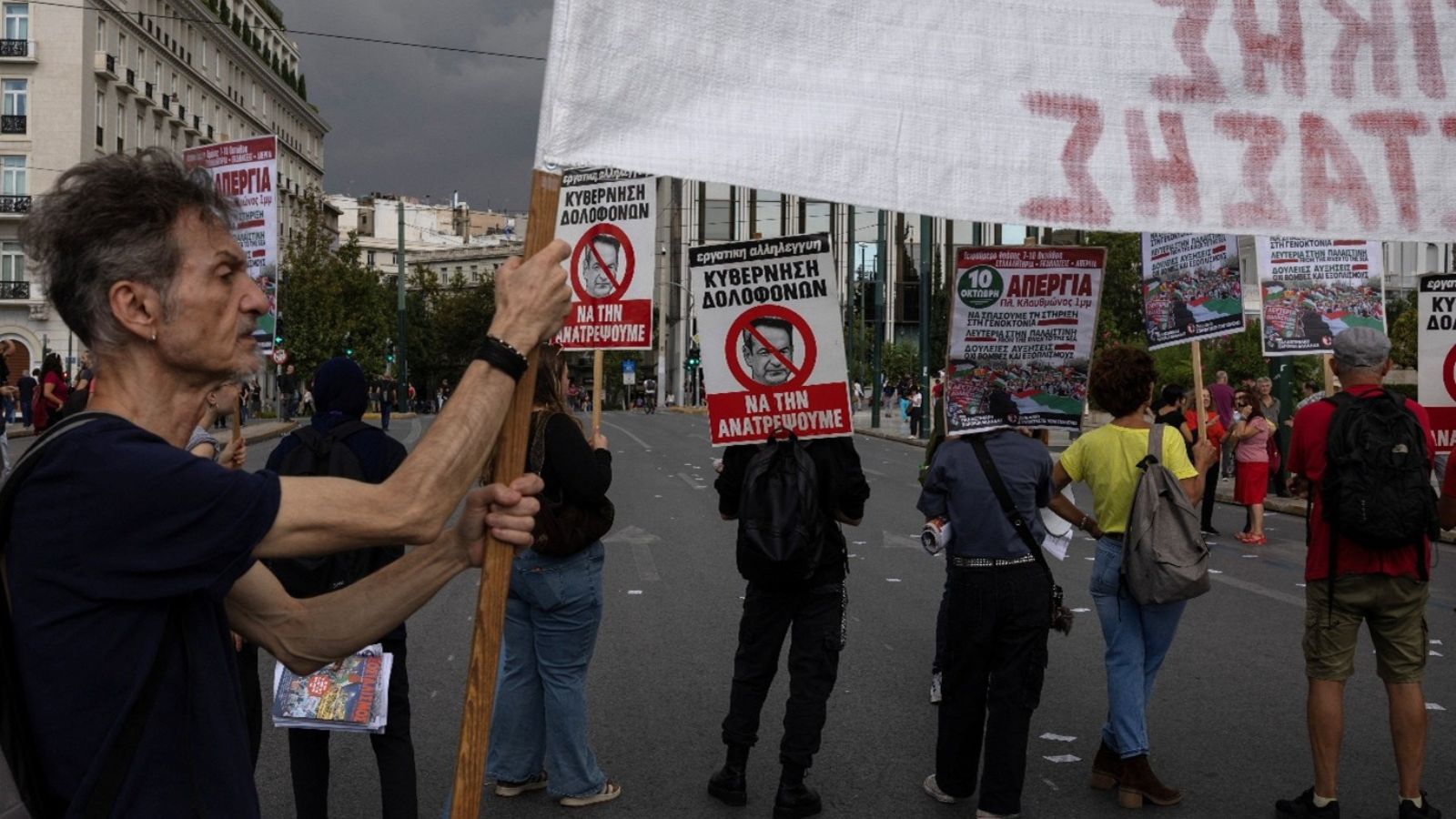Operational Context
Athens experiences recurring 24-hour transport stoppages tied to labor actions and national protest days. Disruption concentrates in the historic/civic core (Syntagma–Omonia axis) and along key commuter corridors, where reduced mass transit capacity pushes commuters onto roads, amplifying gridlock and last-mile delays.
Executive Summary
- Date of Event: 14 October 2025
- Location: Central Athens (Syntagma, Panepistimiou/“Panepistimio”, Stadiou), Sintrivani, Agias Sofias, Venizelou corridors
- Risk Category: Travel Risks
- Severity Level: 3/5
- Confidence Score: 90%
A confirmed public transport strike will significantly disrupt metro, electric railway (ISAP), buses, and trolleybuses across Athens. Expect high road congestion, intermittent protest marches, and access controls around central squares and civic avenues. Primary impact duration: 24 hours, with possible spillover to 24–48 hours due to residual queues and repositioning of fleets. Business and city services should plan for reduced attendance and delayed service windows.
Current Updates
Unions have announced full/near-full stoppages across major modes for 14 Oct as part of broader labor mobilizations. City authorities are preparing rolling traffic restrictions on central avenues and advising flexible work and staggered schedules. Ride-hailing demand and taxi queues are expected to surge.
Known Hotspots and Sensitive Zones
- Civic Core: Syntagma Square, Parliament precinct, Panepistimiou (Panepistimio), Stadiou, Omonia.
- Corridors Mentioned: Sintrivani, Agias Sofias, Venizelou (protest staging/through-routes).
- Transport Nodes: Central bus interchanges; metro/ISAP stations subject to closures or access control.
Impact on Transportation and Services
- Mobility: Citywide mass-transit capacity loss; widespread bus/trolley curtailments; metro/ISAP minimal or no service.
- Roads: Peak-hour saturation; slower emergency response in the core; parking pressure increases.
- Operations: Staff tardiness/absenteeism, reduced footfall for retail/HOReCa, rescheduling of appointments and service visits.
Recommendations
- Workforce & Mobility: Enforce remote work where feasible; publish red/amber/green travel zones; arrange limited shuttles from park-and-ride points; subsidize early, pooled taxi bookings.
- Service & Logistics: Re-time client visits and deliveries to early morning/late evening windows; prioritize urgent SLAs; use micro-fulfillment and couriers for last-mile within the ring road.
- Communications: Issue all-hands advisory with route maps, strike hours, and help lines; provide customer notices offering virtual alternatives and revised ETAs.
- Incident Coordination: Stand up a day-of cell (HR/Operations/Security) to track road closures, escalate exceptions, and confirm staff safety check-ins.
Multi-Dimensional Impact
The strike’s principal effect is on travel and mobility, with the withdrawal of metro/ISAP and curtailed bus/trolley services forcing a road mode-shift that creates severe congestion on central corridors. Business operations will see lower attendance, missed appointments, and slower service delivery, particularly in the civic core and commercial avenues. Supply chain frictions emerge in the last mile, as vans and couriers navigate diversions and crowding, though national and international flows remain largely intact. Regulatory/legal exposure is routine (permitting and crowd-management measures), while social cohesion pressures may rise around protest gatherings but typically remain contained by policing plans. People safety risks are indirect overcrowding at limited alternatives, heat/cold stress during long walks, and occasional scuffles in march corridors yet major incidents are unlikely. Environmental effects are mixed (lower transit emissions offset by car congestion). Critical utilities and ICT are unaffected operationally.
Situation Outlook
It is highly likely the strike runs its planned 24-hour course on 14 October, with predictable rolling closures around Syntagma/Panepistimiou/Omonia during marches. A moderate chance exists of extended curtailments into early 15 Oct due to fleet and crew repositioning. Full normalization typically resumes within the next operating day absent a follow-on action.
Emergency and Monitoring Channels
- Emergency: 112
- Police: 100
- Fire: 199
- Ambulance: 166
- Official Feeds:
Strategic Takeaway
Treat 14 October as a planned service degradation day: maximize remote work, pre-book limited mobility assets, and shift non-critical field tasks. Maintain a light but ready incident cell to manage protests/closures and pivot operations back to normal cadence the next morning. Stay ahead of operational risks with real-time alerts, scenario modeling, and expert advisories with Datasurfr Predict. Start your 14-day free trial of Datasurfr’s Risk Intelligence Platform today.


